Canon EF 35 mm f/1.4L II USM
3. Build quality
Compared to its predecessor the construction of the new device has undergone a lot of changes. It features more elements, more aperture blades, a better minimum focusing distance; still the whole instrument is also physically heavier and bigger. Its dimensions and weight are similar to those of the huge Zeiss Distagon 1.4/35, completely made of metal, and the number of elements can be compared only to that of the Sigma; still the Sigma features one optical element less than the new Canon.
In the photo below the physical dimensions of the Canon EF 35 mm f/1.4L USM II are compared to those of the Sigma A 1.4/35 and other 35 mm Canon lens as fast as f/2.0.
Please Support UsIf you enjoy our reviews and articles, and you want us to continue our work please, support our website by donating through PayPal. The funds are going to be used for paying our editorial team, renting servers, and equipping our testing studio; only that way we will be able to continue providing you interesting content for free. |
- - - - - - - - - - - - - - - - - - - - - - - - - - - - - - - - - - - - - - - - - - - - - - - -
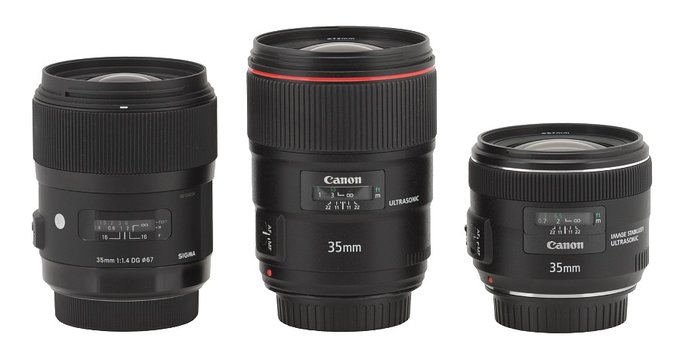 |
The tested lens begins with a metal mount which surrounds contacts and a rear element which is 36 mm in diameter. The element moves and is situated almost on the same level as contacts with the focus set at infinity. When you progress to the minimum focusing distance it hides inside the tube about 1 cm deep. That movement reveals a nicely blackened interior without any electronic parts being visible.
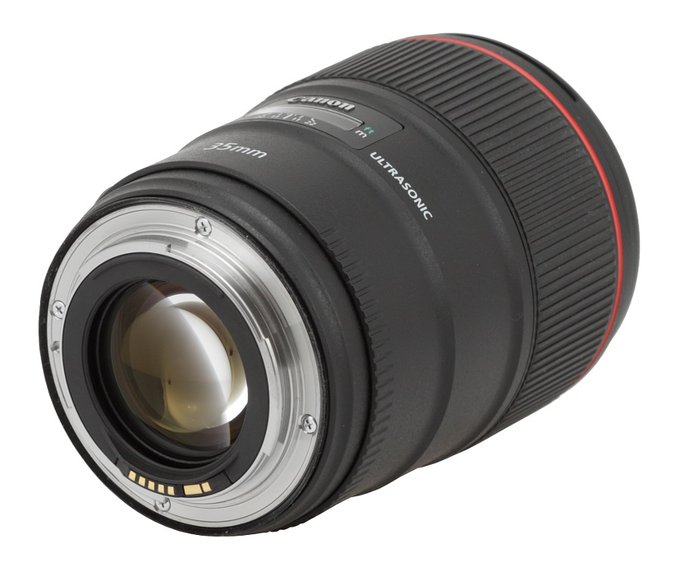 |
The proper body of the lens starts with an immobile, black ring on which you can find a red dot making an alignment with the camera easier. Further on there is a focusing mechanism mode switch (AF/MF) and, on the other side, the serial number and information that the lens was produced in Japan.
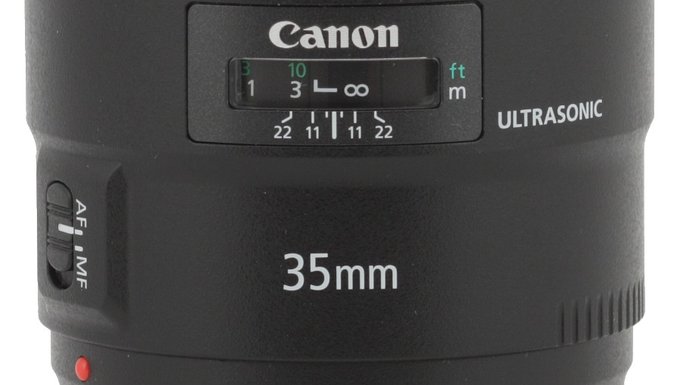 |
Above the focal length marker you get a distance scale behind a window, expressed in meters and feet. Below there are depth of field marks by f/22 and f/11 and one unsigned by f/8.
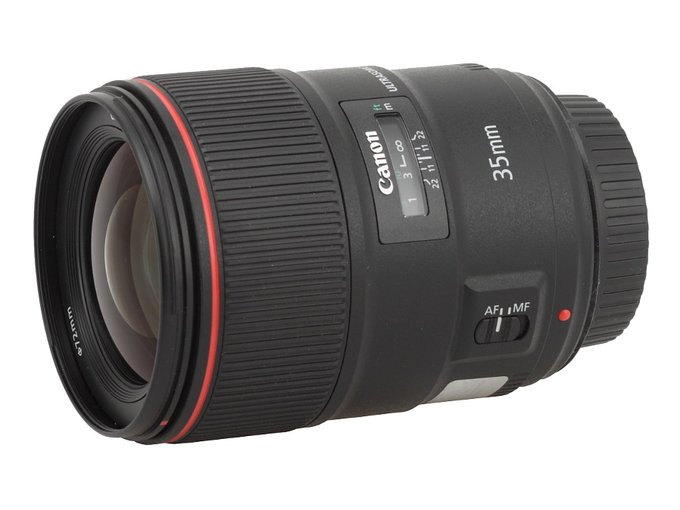 |
A manual focus ring, as wide as 35 mm, is the next part. Most of its surface is taken by rubber ribbing; above it you can find a red stripe, characteristic for the L series. The ring moves smoothly and is well-damped; running through the whole distance scale takes a turn through about 150 degrees. It is a good range, noticeably wider than that of the Sigma A 1.4/35 and slightly wider than that of the Nikkor AF-S 35 mm f/1.4G. Right behind the ring you see a hood mount.
The front element is 54 mm in diameter, slightly convex and immobile. Around it there is an inscription with the name and the parameters of the lens along with a non-rotating filter thread, 72 mm in diameter.
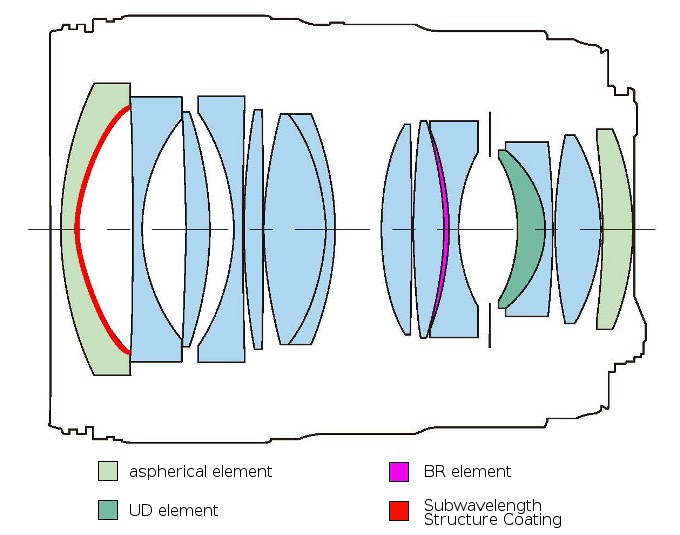 |
Buyers get both caps, a petal-type hood and a soft pouch in the box.
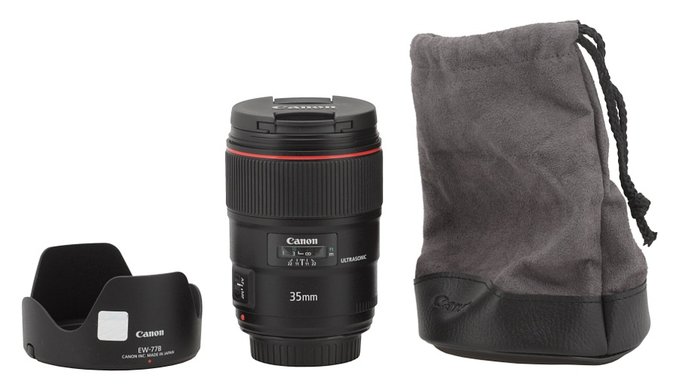 |






